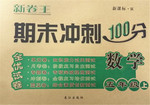题目内容
According to a study by SallieMae, 84 percent of undergraduate students have credit cards, and by the time they are seniors, they have accumulated US$4,100 in debt, on top of whatever student loans they may have taken out.
Credit cards are the most convenient form of payment, and they are aggressively marketed to college students. Reportedly, a typical college student carries 4.6 credit cards and US$3,173 in credit card debt.
Credit cards seem to be a fact of life, not just student life. In the long term, using a credit card properly and paying off the balance can help establish a card history and increase your credit score, which will come in handy when you need an important loan, for a house or car, for example. Your credit score can affect even unrelated things like insurance rates. Credit cards also offer more protection for users than debit cards (借记卡).Under federal law, the credit card holder is only responsible for the first US$50 in fraudulent(欺诈的)purchases in cases of theft or loss. However, debit card users are responsible for the first US$500.
SallieMae found some good news in the fact that two thirds of students had discussed credit issues with their parents, but 84 percent said they needed more information. Those who didn’t get any guidance were more likely to be surprised when they found out how much they owed.
While credit cards offer the easiest access to money, they make it easy to live outside your means. Less than a fifth of students surveyed paid off their balance every month, and carrying a balance brings finance charges, sometimes at a very high interest rates.
SallieMae found that almost 40 percent of students chose their first credit card based on direct mail, which is probably why students get credit card offers in the mail. But when the credit card offers flow in, be sure that you read the fine print. Offers of low or no interest rates can disappear, leaving you a debt that climbs beyond your ability to pay it off.
1. What does the first paragraph imply?
A. Most of the senior students are shocked to see how much they owed.
B. Students can only take out loans from credit cards.
C. Most of students’ loans come from credit cards.
D. Credit cards have a bad effect on college students.
2. The underlined part “come in handy” in the third paragraph probably means “_______”.
A. bring trouble B. make mistakes C. be important D. be useful
3. According to SallieMae, what is the possible reason why students get so many credit card offers in the mail?
A. Many students’ first credit card is based on direct mail.
B. It costs the banks little to mail out credit cards.
C. Students don’t like to go to the bank to open a credit card account.
D. Banks have no other way to let students use their credit cards.
4.What is the theme of the third paragraph?
A. The advantages of using debit cards.
B. The similarities between credit cards and debit cards.
C. The advantages of using credit cards.
D. Credit cards are the most convenient form of payment.
1.C
2.D
3.A
4.C
【解析】
试题分析: 本文叙述了一项关于学生使用信用卡的调查。据调查84%的大学生有信用卡,到他们毕业时,已累计负债4100美元,在他们取得的任何学生贷款之上。信用卡有很多优点比如增加你的信用度,但学生应该读清条款慎重使用。
1.推理判断题。根据“84 percent of undergraduate students have credit cards, and by the time they are seniors, they have accumulated US$4,100 in debt, on top of whatever student loans they may have taken out.”学生用信用卡贷款位于诸如此类的贷款之上。可知大多数学生贷款来自信用卡。故选C。
2.词义猜测题。根据本句前半部分“In the long term, using a credit card properly and paying off the balance can help establish a card history and increase your credit score,”从长远看来,适当地运用信用卡并及时偿清余款,能帮助建立卡历史并增加你的信用评分。可知当你需要一个重要贷款时这能有用。故答案选D。
3.细节理解题。根据“SallieMae found that almost 40 percent of students chose their first credit card based on direct mail, which is probably why students get credit card offers in the mail. ”A
4.本段叙述的是信用卡是一个无法改变的事实,从长远来看,恰当地使用信用能帮助卡建立卡历史,增加信用评分,这在你需要重要贷款时将会派上用场。信用卡甚至能影响一些不相干的事,比如保险费率。与借记卡相比信用卡能为使用者提供更多保护。这些都是使用信用卡的优势,故答案选C。
考点:社会现象类短文阅读。

 课程达标测试卷闯关100分系列答案
课程达标测试卷闯关100分系列答案 新卷王期末冲刺100分系列答案
新卷王期末冲刺100分系列答案 全能闯关100分系列答案
全能闯关100分系列答案